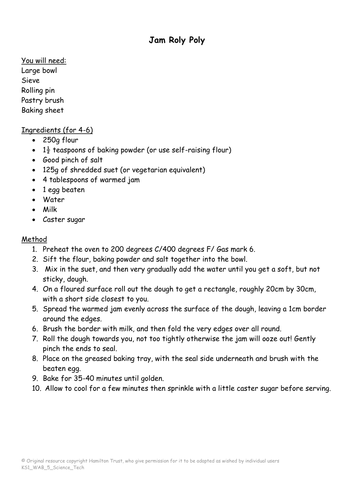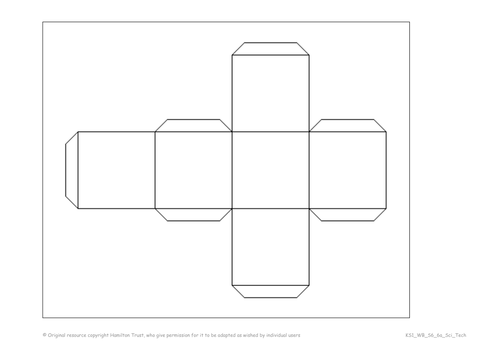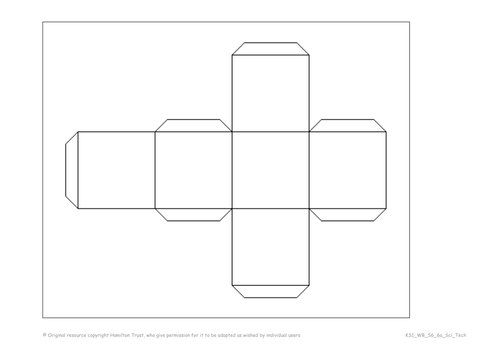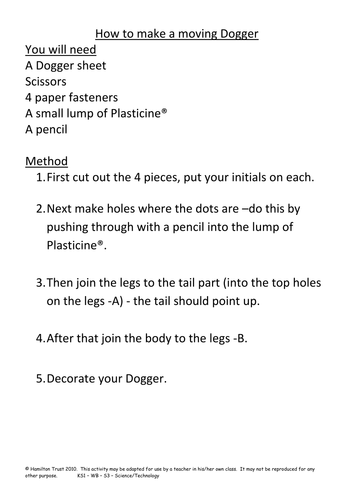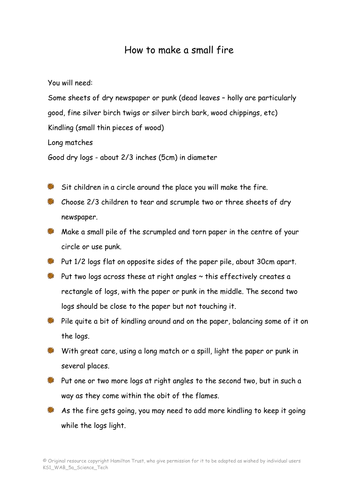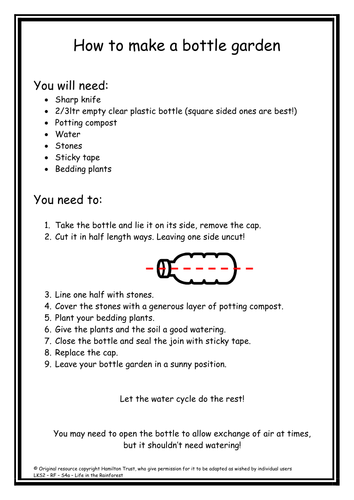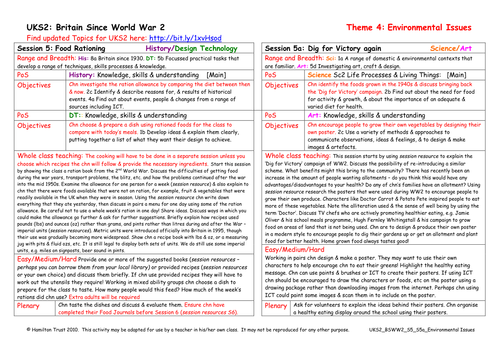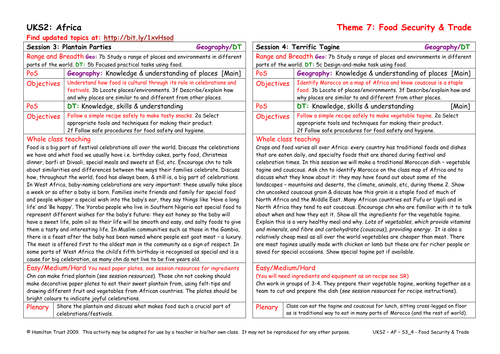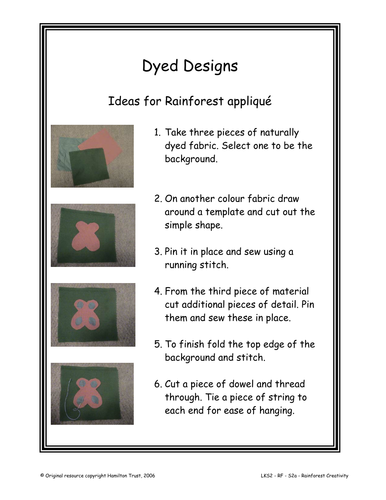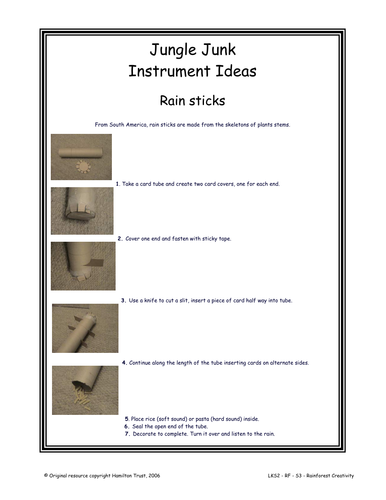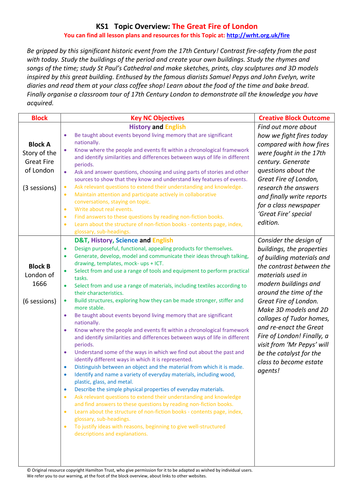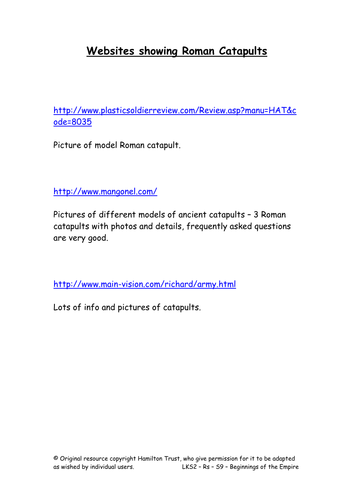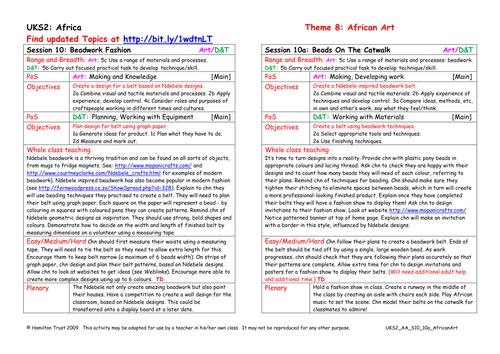
3k+Uploads
10010k+Views
11618k+Downloads
Design, engineering and technology

Cooking A 1950's Meal
Children have the opportunity to cook one course of a typical 1950s meal or to set the table. Discuss safety measures before children cook the shepherds’ pie, rice pudding or sponge pudding and custard. Will everyone have a taste of all three dishes?

Design a Box
In this session, children explore packaging and why we need it. They discuss which materials are better for the environment and go on to design their own packaging, taking this into account.
Hamilton’s cross-curricular topics provide extensive planning resources to facilitate teaching a range of subjects under specific historical, geographic or thematic umbrellas.

Make A Box
Moving on from the last session, children explore how boxes are made from nets by taking apart packaging boxes. Then using a pre-prepared net, children make and design their own boxes.

Make a Moving Dogger
Practise cutting and joining skills by making a moving Dogger. This session links to English Plan 2 Stories with familiar settings. Learn how to cut well, make a hole in cardboard and construct moving joins using paper fasteners.

Cooking Food on an Open Fire
Immediately after the war many people cooked on open fires using wood, which was cheap or easy to gather free. Cook some potatoes on an open fire outside for children to taste with butter or cheese. If possible allow children to toast some marshmallows with adults.

Water Cycle in Miniature
On Earth we still have the same drops of water that touched the lips of the dinosaurs! In this session children use all that they have learnt in the previous session to create a self contained bottle garden.
Suitable for years 3 and 4.

Everyday Materials - Materials Matter - Year 2
Explore the useful properties of materials with a range of investigations involving absorbency and flexibility. Discover which type of kitchen towel or cloth is most effective at mopping up spills; consider why building materials must be absorbent and which ones fit the bill; create artwork by exploring the textures of materials and learn all about wax and how to re-mould it.
Includes 6 session plans & resources:
01 - Mopping up
02 - Are bricks absorbant?
03- Waterproofing materials
04 - Printing
05 - Resist the wax!
06 - Melting and moulding
Hamilton’s science scheme uses hands-on investigative science activities to promote a deep understanding of scientific concepts and help children develop effective methods of scientific enquiry. Our scheme is fresh, original and free!

Making an Amphitheatre
Children continue to make their model amphitheatre using a variety of junk-modelling equipment. They work in pairs and are careful to include the details – women’s tier, animal cages, etc. They discuss their finished model and compare it to the pictures.
Suitable for years 3 and 4.
Find other lesson plans and resources at www.hamilton-trust.org.uk.

Food Rationing
During the 1940 and 50s food was rationed. Discuss the ration allowance then and compare it with what you eat now. In groups and using suggested books or resource examples children will choose and cook a ration recipe for everyone to taste. Was our diet better then?

Plantain Parties
Children discuss how all cultures have celebrations and festivals – special days in which special foods are eaten and shared. In parts of West Africa a child’s 5th birthday is special as many do not live to be five. Children make fried plantain and decorate plates.

Roman entertainment
Children explore the ways in which the Romans entertained themselves and others in the empire by holding gladiator fights and chariot racing. In order to get to grips with what this involved, children design and build their own chariot and then race it!
Includes:
- Topic Overview
- Block Overview
- Lesson 01: Using artefacts to learn about Roman gladiators
Children look at (hopefully in the context of a visit to a museum or Roman site) artefacts from Roman times and think about their function and attributes.
- Lesson 02: Researching chariot racing
Children investigate a variety of vehicles and understand how they move.
- Lesson 03: Explaining how wheels and axles work
Children understand that wheels and axles can be assembled in different ways.
- Lesson 04: Designing a Roman chariot
Children work together and individually to design a chariot, deciding what materials they will use.
- Lesson 05: Making a Roman chariot
Children use variety of tools and materials to create their own chariot.
- Lesson 06: Evaluating the Roman chariot design
Children compare their chariots, looking at the things that worked and those that they would do differently.
Find more lesson plans and resources at www. hamilton-trust.org.uk.

Appliqué – Cutting & Sewing
In this session children complete their Appliqué by cutting and sewing the pieces of their design before proudly displaying it in the classroom. They take time to reflect on the whole dyeing and designing process and evaluate the finished product.

Headdress to Impress!
The Kayapo Indians who live in the Rainforests of Brazil are famous for their ceremonial headdresses. In this session children use the internet to study their designs before creating their own to wear in the classroom.

Jungle Junk
Listen to the Rhythm of the Rainforest in this session! Children start by studying the Baka people who live in the African Rainforests, looking in detail at their instruments. Children then create simple instruments of their own using junk modelling techniques.

The Great Fire of London - St Paul's Cathedral - Key Stage 1
Be gripped by this significant historic event from the 17th Century!
Develop your ideas about this famous cathedral using drawing, imagination and communication; use charcoal drawing and potato printing to develop artistic ideas inspired by St Paul’s before designing, making and decorating a final model Cathedral.
Includes:
- Topic Overview
- Block Overview
- Lesson 01: Journey Back in Time
Find out about St Paul’s Cathedral and then develop your own ideas in charcoal pictures.
- Lesson 02: The Dome
Research St Paul’s further using paintings and sculptures and use clay to make your own 3D artefacts.
- Lesson 03: Abstract Art
Think about the way fire looks and the way it makes people feel. Empathise with the people who lived through the Great Fire and make your own piece of abstract art using potato printing.
- Lesson 04: Designing and making a cathedral
Consolidate all your knowledge about St Paul’s cathedral by planning, making and decorating your own junk model cathedral.
Find more lesson plans and resources at www. hamilton-trust.org.uk.

Street Model
Building on previous session, children make a model of a street near the school (or from imagination). Class is split in two – one group make a ‘then’ model and one a ‘now’ model – using junk modelling techniques. Display along with leaflets previously made.

Design & Make Catapults
Children look again at Roman catapults. Using a wide variety of materials, incl some mechanical components, they design & create a working model of a catapult in the Roman style. They develop their ideas, then compete to see whose catapult works best!
Suitable for years 3 and 4.

Designing an Amphitheatre
Children continue the work on gladiators and Roman entertainment and look at amphitheatres. They study what they look like and realise that these varied from place to place. They begin to plan and design their own model amphitheatre.
Suitable for years 3 and 4.

Roman Central Heating and Ovens
Children explore some more achievements of the Roman’s culture looking at their use of central heating and ovens for cooking. They study the mechanics of how these worked, then look at what the Romans cooked in the ovens. They make a Roman breakfast.
Suitable for years 3 and 4.
Find other lesson plans and resources at www.hamilton-trust.org.uk.

Beads On The Catwalk
Hold a fashion show in class! Children create their own beadwork belts based on Ndebele designs and using traditional methods. Sensational!

